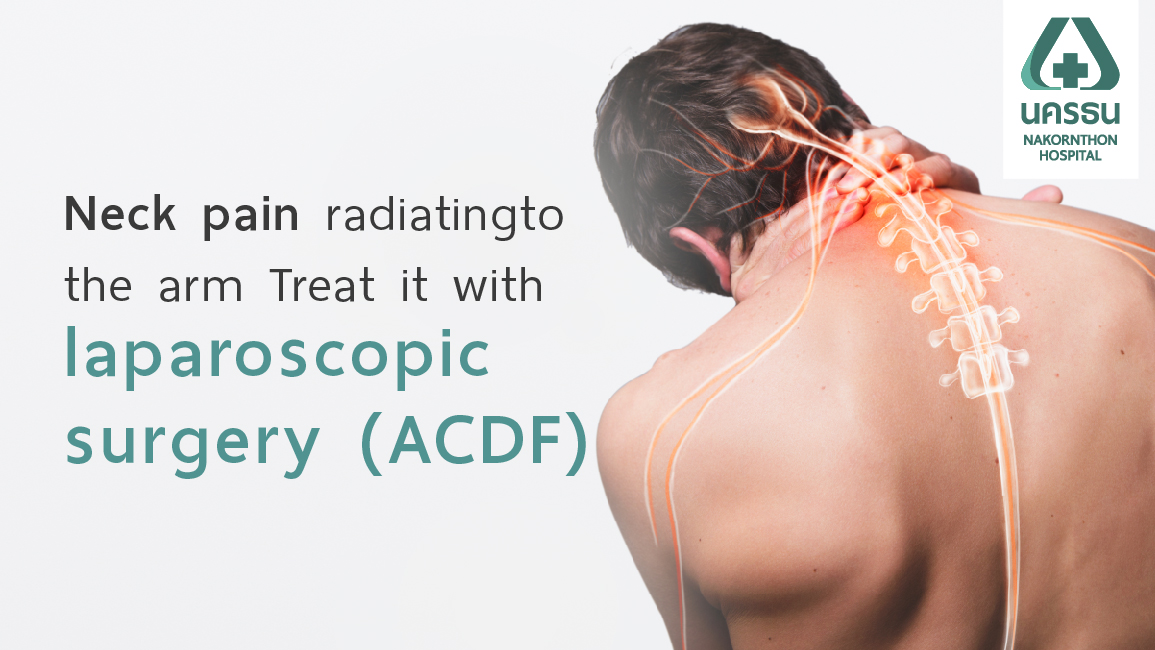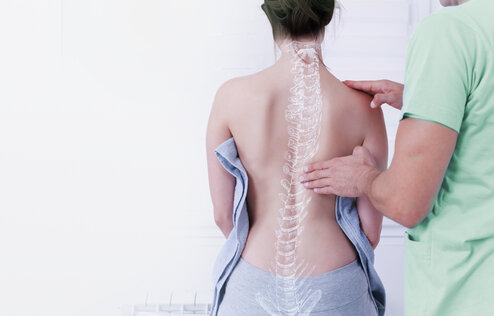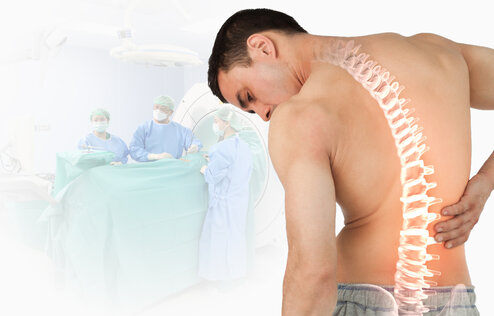
Do you know what cervical radiculopathy is? Cervical Radiculopathy is a condition in which a spinal nerve is pinched due to inflammation or nerve root compression. Mostly, it occurs when the cervical spine gets inflamed or damaged. Some people may initially experience the condition as ordinary neck pain before it progresses to a more serious condition. The main symptoms of Cervical Radiculopathy are severe neck pain with or without radiation into arms or fingers, loss of neck movement, and numbness or weakness in the arm or fingers. In this article, we will provide you with information about Cervical Radiculopathy: the definition, the symptoms, and how to treat the condition.
Table of Contents
What is Cervical Radiculopathy
Cervical Radiculopathy, also known as, "pinched nerve," is a condition in which the spinal nerve at the neck gets pinched or compressed. When the cervical spine gets inflamed or damaged, usually as a result of degenerative bone disease such as cervical spondylosis, the spinal nerve emerging from the cervical spine gets compressed or pinched. This results in nerve root compression. The spinal nerves innervate the limbs: the arms and fingers are innervated by the spinal nerves from the neck, and the legs and toes are innervated by the spinal nerves from the lower back. Hence, when the nerve gets pinched, neurological symptoms, such as numbness, weakness, and radiated pain, occur in the limbs.
These nerve roots can be damaged in a variety of ways. The functions of the spinal nerves run both ways: sensory and motor functions. Mostly, patients with Cervical Radiculopathy will experience severe neck pain, decreased neck movement, and radiated pain into the arms or fingers. The pattern of neurological symptoms varies depending on the level of the pinched nerve.
Cervical Radiculopathy Symptoms
Cervical radiculopathy symptoms and typical neck pain can be similar in the early stages. The neurological deficits, on the other hand, are distinct signs and symptoms of cervical radiculopathy. Here are some examples of Cervical Radiculopathy symptoms.
- Neck pain. The pain may get worse with neck movement, mainly extension (tilting your head upwards).
- Sensory issues: numbness, tingling sensations, or pin-and-needles sensations in the arms or fingers.
- Motor issues: muscle weakness in the arms or fingers. Lack of coordination and loss of reflexes usually indicate damaged nerves and muscle atrophy as well.
It is noted that the symptoms of Cervical Radiculopathy typically emerge on just one side of the body. The level of the damaged nerve roots will indicate the pattern of symptoms. These signs and symptoms may present in one area only or progress to the entire arm and fingers, depending on the severity of the condition.
Causes of Cervical Radiculopathy
Cervical Radiculopathy is generally the secondary condition to the primary concerns: mainly a ruptured disc, degenerative conditions, i.e., cervical spondylosis, arthritis, and other traumatic injuries.
Here are common causes of Cervical Radiculopathy:
- Degenerative changes. Patients with Cervical Radiculopathy usually have degenerative changes, such as cervical spondylosis or osteoporosis. The degenerative conditions make the space between each vertebra smaller, inducing the nerve to get pinched more easily. The discs have become thin in degenerative conditions as well. Hence, the nerve roots get applied more pressure from the lack of support in the spine.
- Traumatic injury. An injury can also cause Cervical Radiculopathy. The injury to the disc is usually the main cause, mostly in young people. The ruptured discs result in the more pressure applied to the spinal nerves, causing the inflammation and nerve root compression.
Some other causes of Cervical Radiculopathy are worth mentioning, such as:
- Benign, or noncancerous, growths in the spine.
- Sarcoidosis, the growth of inflammatory cells.
- Spinal infections or Osteomyelitis.
- Tumor or Cancer in the spine.
- History of fracture and Cervical Spondylolisthesis.
Risk Factors
Risk factors contributing to Cervical Radiculopathy include:
- Age. The degenerative changes correspond with age. The risk of acquiring Cervical Radiculopathy generally increases as you age.
- Strenuous activities. Some activities that put high levels of stress and pressure on the spine.
- Repetitive neck movements. Repetitive motions or vibrations on the neck apply pressure to the spine, gradually but constantly, resulting in micro injury in the vertebrae. The activities include diving head first in the swimming pool, driving equipment that vibrates, and playing golf.
- A history of previous Cervical or Lumbar Radiculopathy.
- Smoking
Diagnosis for Cervical Radiculopathy
To diagnose Cervical Radiculopathy, your doctor will begin with a history taking and physical examination. After the history and physical examination, your doctor may have additional tests to confirm the causes of the pain, determining the level of damaged nerve and the severity of the condition. Cervical Radiculopathy tests generally include MRIs, X-rays, and CT Scan.
1. MRI
MRI (Magnetic Resonance Imaging), is the most commonly used imaging test used to examine and diagnose Cervical Radiculopathy. MRI images show the state of the spine, the tissues (muscles, ligaments), and the discs. It is generally used to find tumors, cancer, herniated discs, and spinal stenosis. The main benefit of an MRI is a high-quality image showing all views of the spine, allowing your doctor to closely inspect the condition of the structures. MRI uses magnetic fields and radio waves to generate the images. It is a painless and harmless procedure.
2. X-rays
X-rays are usually done when your doctor wants to examine the state of your bones. Soft tissues, such as muscles, ligaments, the discs, and the spinal nerves, do not show up on X-ray. This technique is beneficial if your doctor wants to determine the condition of your spine, looking for signs of infection, fractures, or tumors. X-ray allows the doctor to inspect the shape of your vertebrae as well. However, X-rays do not show the condition of your discs, despite the fact that they can give the doctor some idea of how much degeneration has occurred and progressed in the spine. The X-ray is useful in determining conditions such as arthritis and spondylosis as well.
3. Physical Examination
Another routine procedure that the doctor will use to diagnose the condition is a physical examination. During the examination, the doctor will ask you some questions and test your neck, arms, and hands to determine the severity. The steps of the procedure may include:
- How you feel when you bend your neck upwards, downwards, and sideways, rolling your neck in all directions.
- How well you can twist your neck.
- The doctor may palpate your neck to find tenderness and muscle spasms around your neck and shoulders.
And for the examination to determine the neurological deficits, the doctor may:
- Test for numbness or tingling sensations in the arms, hands, and fingers.
- Test the reflexes.
- Test the strength of your arms, hands, and legs.
- Test for the signs of nerve irritation.

Cervical Radiculopathy Treatment
The main objective of Cervical Radiculopathy treatment is pain relief. As a secondary goal, reduce the risk of further neck injury and complications. The treatments can be generally divided into two categories: non-surgical treatment and surgical treatment. The treatment will be planned by the doctor based on your condition and health issues.
NonSurgical Treatment
Typically, to treat Cervical Radiculopathy, non-surgical treatment will be approached first. Here are examples of treatments you may have:
- Medications. Medications are used to relieve pain, reduce inflammation and muscle spasms. It is recommended that you take medications as your doctor prescribed.
- Medications are not to treat your degenerative conditions, but rather help with controlling pain.
- Cervical collar. Cervical collar is generally prescribed if your neck is injured. The limited movements of the neck will help provide support and accelerate the healing process. The collar can be either soft or hard, depending on your condition. You will be advised to check the skin under the collar everyday to prevent sores or blisters.
- Steroid Injection. Epidural steroid injection or spinal injection. This procedure aims to block the damaged nerve by placing a small amount of cortisone into the spinal canal. This helps in reducing inflammation and relieving the pain caused by the irritated nerve roots. However, it is noted that steroid injection is not always successful and should be taken wisely. Consult your doctor about this procedure: the pros and cons. The spinal injection is typically used to postpone surgical treatment.
- Physical therapy. The physiotherapy program can be varied, depending on your conditions and your therapist. Generally, the session will include mobilization, exercises, and other modalities to relieve pain, such as ES (Electrical Stimulation) and Therapeutic Ultrasound Therapy. The doctor may suggest you do the rehab program after the surgery as well.
Surgical Treatment
Your doctor may suggest surgical treatment after unsuccessful conservative treatments have been tried. In some severe cases, your doctor may suggest surgical treatment right away. Muscle wasting or atrophy, increasing weakness and numbness, severe pain that disrupts sleep, and pain that begins to affect the lower limbs are typical signs and symptoms that indicate the need for surgery.
Here are examples of surgical treatment that you should know about:
- Anterior Cervical Discectomy and Fusion (ACDF). This technique is generally approached when the cervical spine is damaged or the disc is herniated. The surgery is the most common procedure used to relieve Cervical Radiculopathy.
- Artificial Disc Replacement. This method is used when there’s a need to replace the disc with the artificial one. Contrary to doing fusion, which limits the neck movements, replacing the disc has the benefits of maintaining neck mobility.
Prevention for Cervical Radiculopathy Treatment
Cervical Radiculopathy can be prevented by reducing risk factors. Despite the fact that the degenerative changes are inevitable and cannot be completely cured, you can take care of yourself by reducing the risk factors, including:
- Avoid lifting heavy objects.
- Avoid repetitive neck movements such as bending your neck upwards and downwards.
- Quit smoking.
Cervical Radiculopathy Conclusion
Cervical radiculopathy is characterized by severe neck pain and radiated pain into the arms or fingers. If there are neurological deficits, symptoms such as numbness or weakness can occur as well. Cervical Radiculopathy usually occurs secondary to degenerative changes or traumatic injuries. The condition is treatable by non-surgical treatments, such as medications and physical therapy, and surgical treatments. It is recommended that you seek professional advice in order to precisely diagnose the conditions and determine the suitable treatments.
For more information, please contact:
- - Website : https://en.nakornthon.com
- - Facebook : Nakornthon Hospital - International Patient
- - Line : @nakornthoninter
- - Tel: 02-450-9999 (Available 24 hours)
Free Online Consultation
Article of Spine Center






